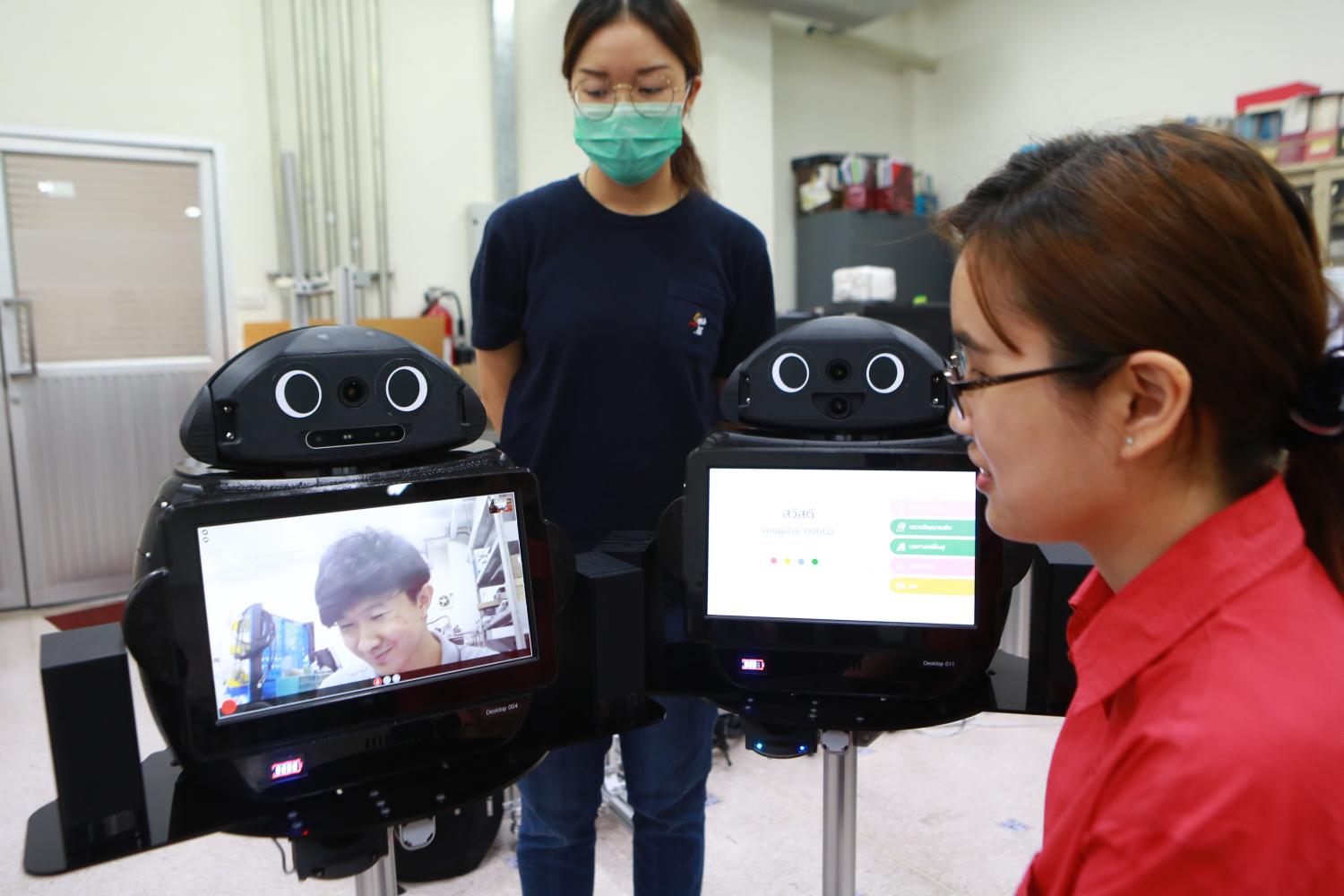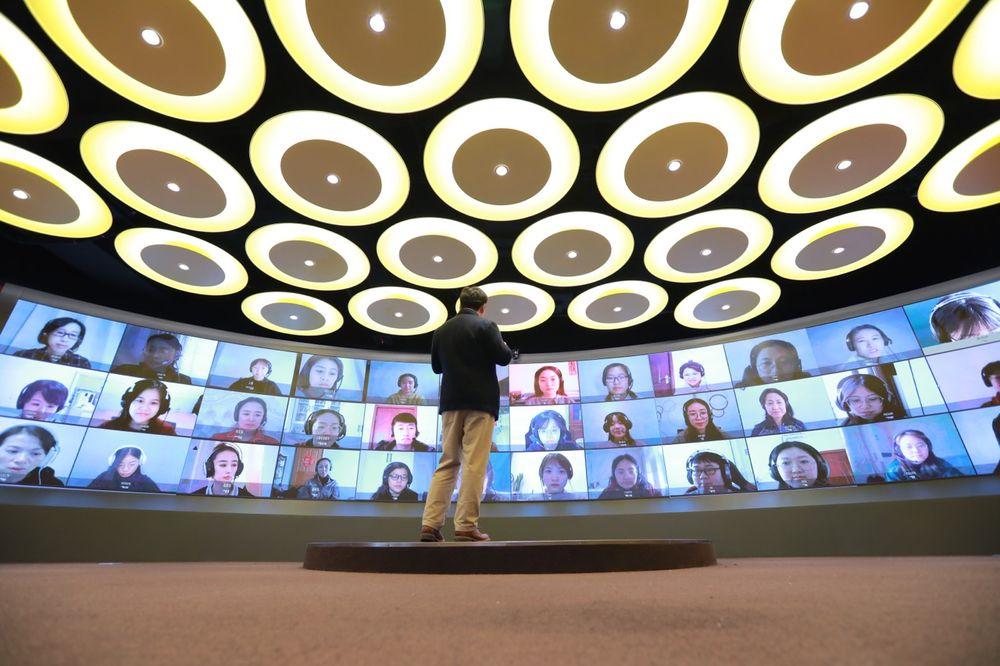
The coronavirus outbreak, despite wreaking havoc around the globe, has become a key accelerator for digital transformation among organisations to ensure their work continues during this difficult time.
Numerous organisations pivoting towards work-from-home measures have adopted technologies related to video conferencing, collaborative tools and remote working.
The pandemic has also prompted companies to come up with applications that can help mitigate the spread of Covid-19.
DIGITAL WAVE
Thanachart Numnonda, a tech pioneer and executive director of IMC Institute, a tech training and research organisation, said this outbreak, unlike others in the past, has affected many countries at once and is expected to carry on for a long period of time.
This will broaden digital adoption and accelerate digital transformation, Mr Thanachart said.
Soon it will become more natural for businesses and individuals to embrace digital technology, such as mobile payment, e-wallets, video conferencing and collaboration tools, he said. Many will also pivot towards 5G, high-speed networks, remote working and e-learning.
In the US, stock prices of many tech firms have risen in the wake of the outbreak. In Thailand, the most popular downloaded apps are those associated with video conferencing and food delivery, according to AppAnnie, an app analytics and market data firm.
Many individuals or organisations who were reluctant to adopt digital tech have paid more attention to it as a way to continue their work.
Some schools and universities that earlier ignored remote learning have now been forced to go online.
"After the outbreak, we will see digital adoption in every part of our daily life," Mr Thanachart said.
During the crisis, the biggest lesson in Thailand is "communication in crisis", which needs to be faster and accurate, he said. The government's message needs to be simple and reach as many citizens as possible, which helps ward off public confusion over disinformation shared online.
"Digital literacy needs to be taught," Mr Thanachart said.
New technology continues to be developed to fight the spread of the coronavirus. In Thailand, it is in the early stages of developing apps that locate risky areas for Covid-19 and places where masks are sold.
"Thailand still doesn't have much data compiled for analytics through artificial intelligence (AI)," Mr Thanachart said. "There is a lack of tracking devices or Internet of Things devices."
He pointed to China, where a substantial number of CCTV cameras in public places can identify people who are supposed to stay at home. "The trade-off is less data privacy in this model," he said.
TECH DEPLOYMENT
Pawoot Pongvitayapanu, founder and chief executive of e-commerce platform Tarad.com, said he launched the Thailand Covid-19 Digital Group (TCDG) as a Facebook community page for tech fellows willing to collaborate to combat the outbreak through the use of technology.
There are nine subset groups under the TCDG to ensure work is executed speedily.
Many are working on a platform to track infected people or those requested to self-quarantine to allow health authorities easier monitoring.
Others are handling chatbots for Covid-19 consultation with the public, technology that can identify the location of drugstores, a tool that can gauge the volume of available masks and alcohol-based gel, as well as communication channels for ways to combat the disease, promoted by influencers.
The TCDG also recently developed https://covid19.th-stat.com, which shows the updated status of infections in Thailand and at-risk locations.
Pun-Arj Chairatana, executive director of the National Innovation Agency (NIA), said state agencies have worked together on a new app called DDC-Care that helps people self-assess whether they have contracted Covid-19 and tracks people who travelled from at-risk countries that require self-quarantine for 14 days.
The app was jointly developed by the NIA, the National Science and Technology Development Agency, the National Electronics and Computer Technology Center, the National Broadcasting and Telecommunications Commission, the Digital Government Agency, Thammasat University and the Digital Economy Promotion Agency.
The Department of Disease Control (DDC) can access the data and provide recommendations for at-risk people, including those who develop Covid-19 symptoms. The app can also show travel journeys for those determined to be infected.
Moreover, people who have close contact with people suspected of contracting the coronavirus can also download the app to self-report their health conditions over the course of 14 days.
Technology giant IBM recently introduced an AI tool that can respond to frequently asked questions about Covid-19.
The IBM Watson Assistant for Citizens draws data from various sources, including the World Health Organization, the US Centers for Disease Control and Prevention, and Thailand's DDC and National Institute of Health, as well as the Bangkok Post.
"During the outbreak, it's very important for us to leverage advanced technology to help provide citizens access to accurate, useful and trusted information," said Patama Chantaruck, vice-president for Indochina expansion and managing director of IBM Thailand. People can access the service at http://ibm.biz/COVID19Thailand.
The crisis is a reminder for many organisations to pay attention to crisis management and business continuity planning.
"The outbreak caused office workers in administrative functions to work remotely and rely on online meetings," said Vilaiporn Taweelappontong, lead partner for advisory PwC Thailand. "However, when working in isolation for a long period of time, businesses need to come up with activities that can foster psychological relief for employees too."

A tutor offers online classes in China amid the outbreak.
TELEMEDICINE IN MOTION
Yothi Medical Innovation District (YMID) under the NIA and the Technology and Innovation-Based Enterprise Development Fund have fostered a channel where tech startups can help patients avoid the hospital, talking to doctors online to help reduce the chance of contracting the coronavirus.
"We aim to reduce 750,000 visits at 20 hospitals," Mr Pun-Arj said. The service should help reduce workload for physicians and nurses and make hospitals less crowded.
The YMID has a collection of 22 health tech startups that separately play a role in screening patients, giving basic medical advice, teleconsulting, conducting diagnoses, providing patient-care systems and arranging medical logistics.
For example, patients suffering from non-communicable diseases can seek teleconsultation with health experts, practice telemedicine in which medical practitioners can conduct remote diagnoses, and use external laboratory tests for their health conditions.
AI can be used for diagnosis, while robots can be deployed to take care of patients in negative pressure rooms to ward off the chance of infection among medical personnel, Mr Pun-Arj said.
Meanwhile, more than 30 startups are working on technology that supports social distancing, such as video conferencing, data gathering and online learning.
The crisis has forced hospitals and schools to engage more in digital technology, which opens the door for startups to thrive.
WAKE-UP CALL
Sandy Shen, senior research director of consultancy Gartner, said the outbreak is hampering traditional methods of operation, making digital approaches more important.
"This is a wake-up call to organisations that focus on daily operational needs at the expense of investing in digital business and long-term resilience," Ms Shen said.
In businesses where remote working capabilities have not yet been established, they need to work out interim solutions such as instant messaging for general communication, file sharing/meeting solutions, and access to enterprise applications such as enterprise resource planning and customer relationship management, while reviewing all security arrangements to ensure secure access to applications and data.
Organisations also need to deal with staffing shortages to maintain basic operations, Ms Shen said. They need to conduct workforce planning to assess risks and address staffing gaps, such as identifying mission-critical service areas.
Businesses can explore how digital technologies can be used for work, such as AI technology for automating tasks, providing customer service and dealing with candidate screening.
Many organisations have already engaged with their customers via digital platforms, such as branded sites and apps, online marketplaces and social media, though offline face-to-face engagement still plays a vital role.
Video conferencing and live-streaming solutions can accommodate customer engagement and sales.
Enterprises should also enable customers to use self-service via online, mobile, social, kiosk and interactive voice response channels, Ms Shen said.
"Organisations can leverage digital channels, such as online marketplaces and social platforms, to compensate for some of the demand loss," she said. "They can set up official pages/accounts and integrate commerce capabilities to enable online selling. They should also quickly adapt products to make them suitable for selling through digital channels."
Companies can leverage data to enhance their decision-making and communicate progress more efficiently to employees, Ms Shen said.